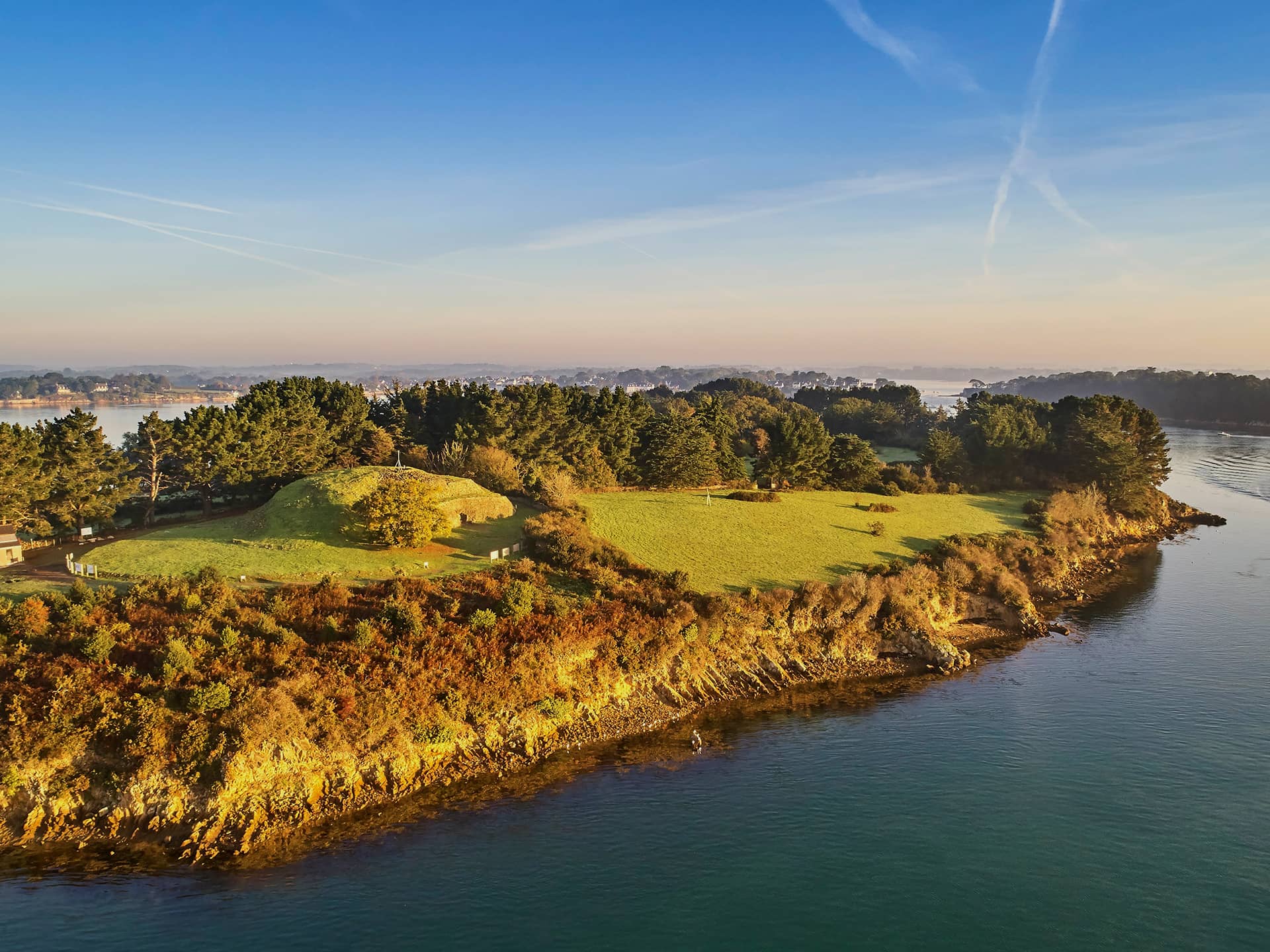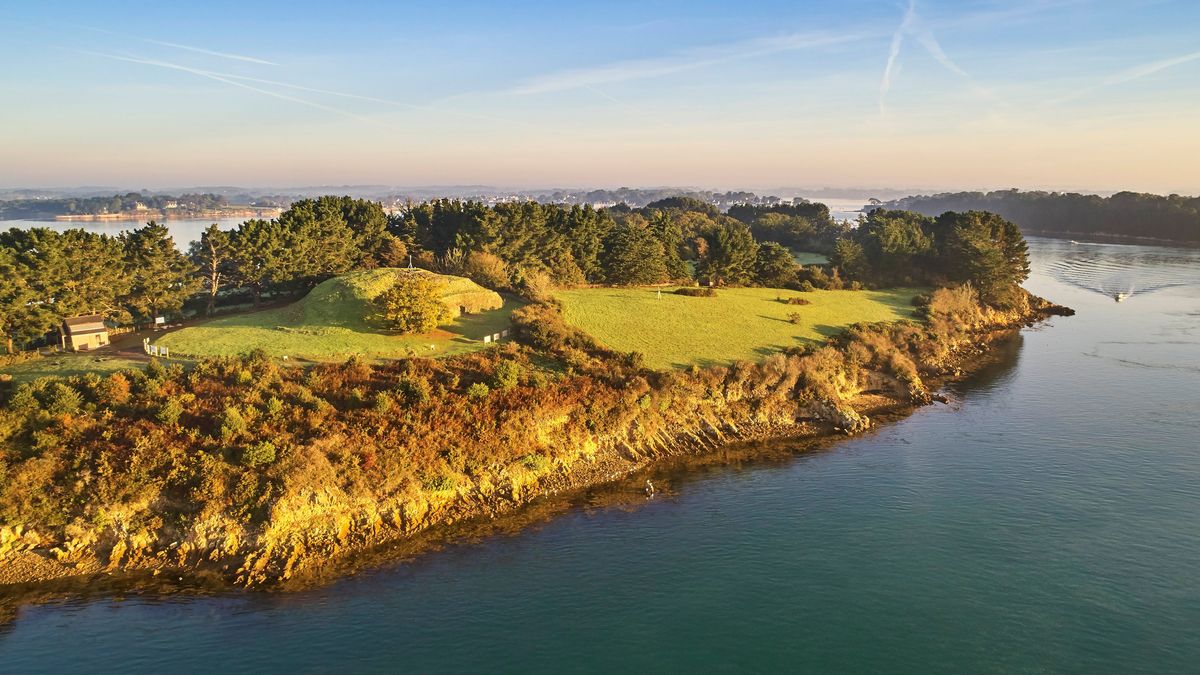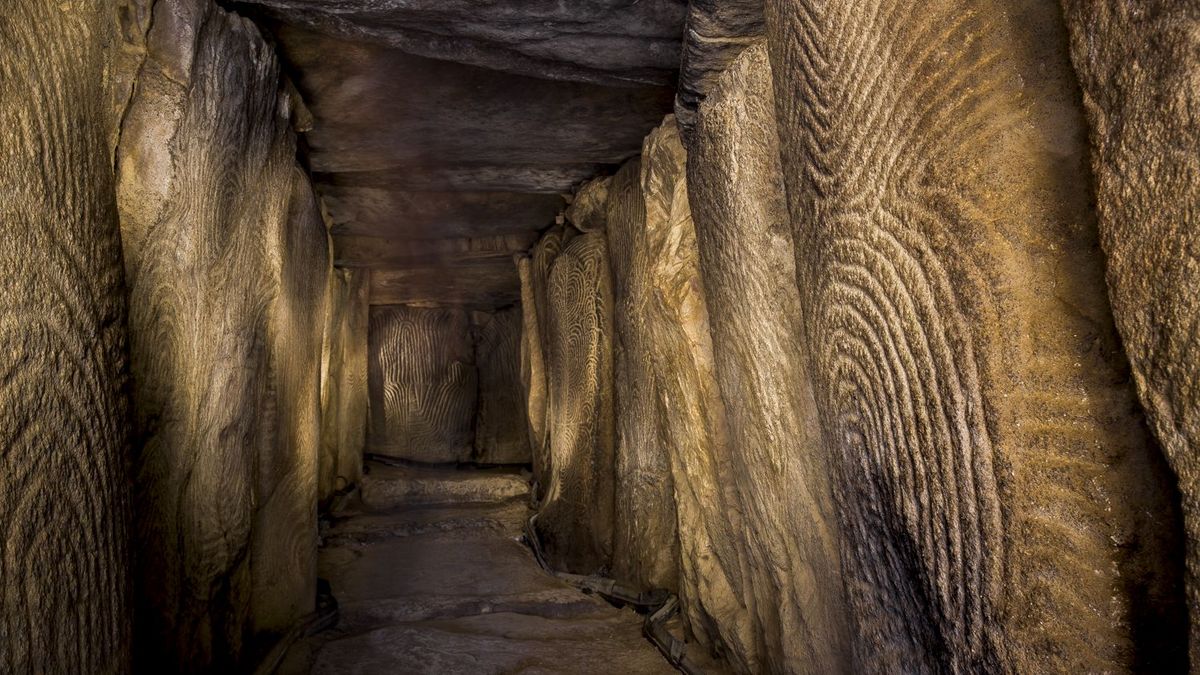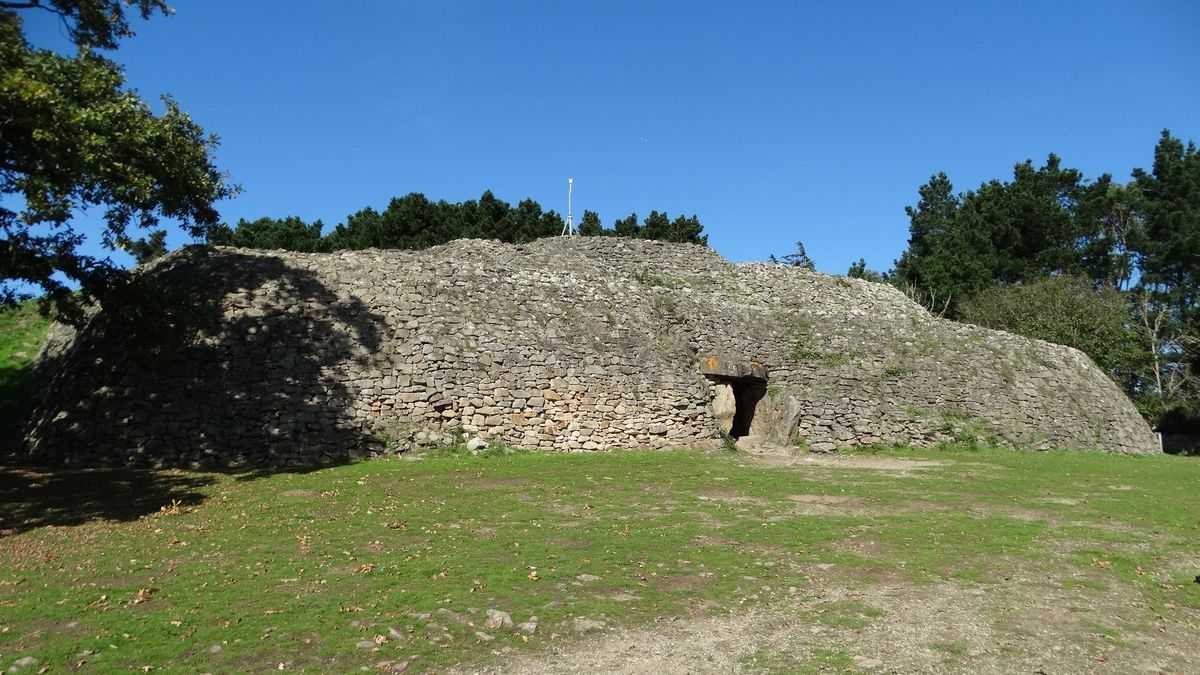In his notes on a journey through western France published in 1836, Prosper Mérimée, at that time France’s Inspector-General of Historic Monuments, wrote that he had not been able to walk the entire length of the dolmen gallery on this site because excavations had not been completed. The excavations in question were only the first of a long series of official digs. The remote site, located on an island in the Gulf of Morbihan, soon became world-famous, attracting British archaeologists passing through Morbihan and hosting meetings of learned societies.
Gavrinis cairn owes its fame to the engravings covering the surface of 23 of its orthostat slabs, which form the walls.
The excavation work by Charles-Tanguy Le Roux carried out in the early 1980s revealed that the chamber capstone formed part of a monolith that must formerly have been part of the Locmariaquer large menhir alignment. This was evidenced by the presence of engravings made prior to its reuse to form the ceiling of the Gavrinis burial chamber. What is more, this piece of engraved menhir proved to be an exact fit with the capstone of the Table des Marchands that lies near the Broken Great Menhir. The discovery supported the idea that close and complex ties existed between the various monuments in the Neolithic era.
The research currently being done by Serge Cassen into the engraved symbols sheds light on the complexity of these engravings: how they were made, their meaning, and the development of the symbols during the course of the Neolithic.
Gavrinis cairn was listed as a historic monument in 1901. It is one of the prehistoric treasures of the Gulf of Morbihan, with no equivalent anywhere else in the world.



